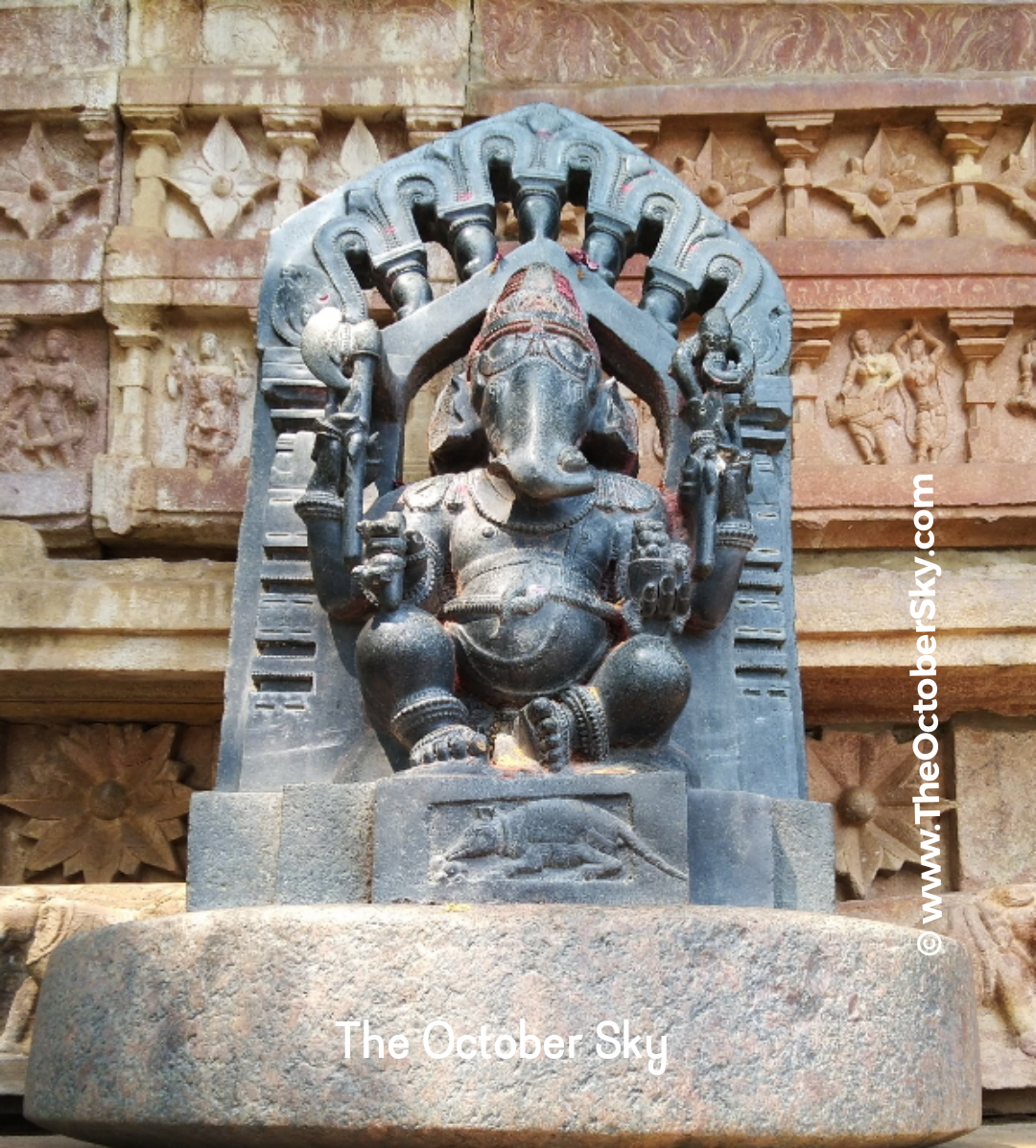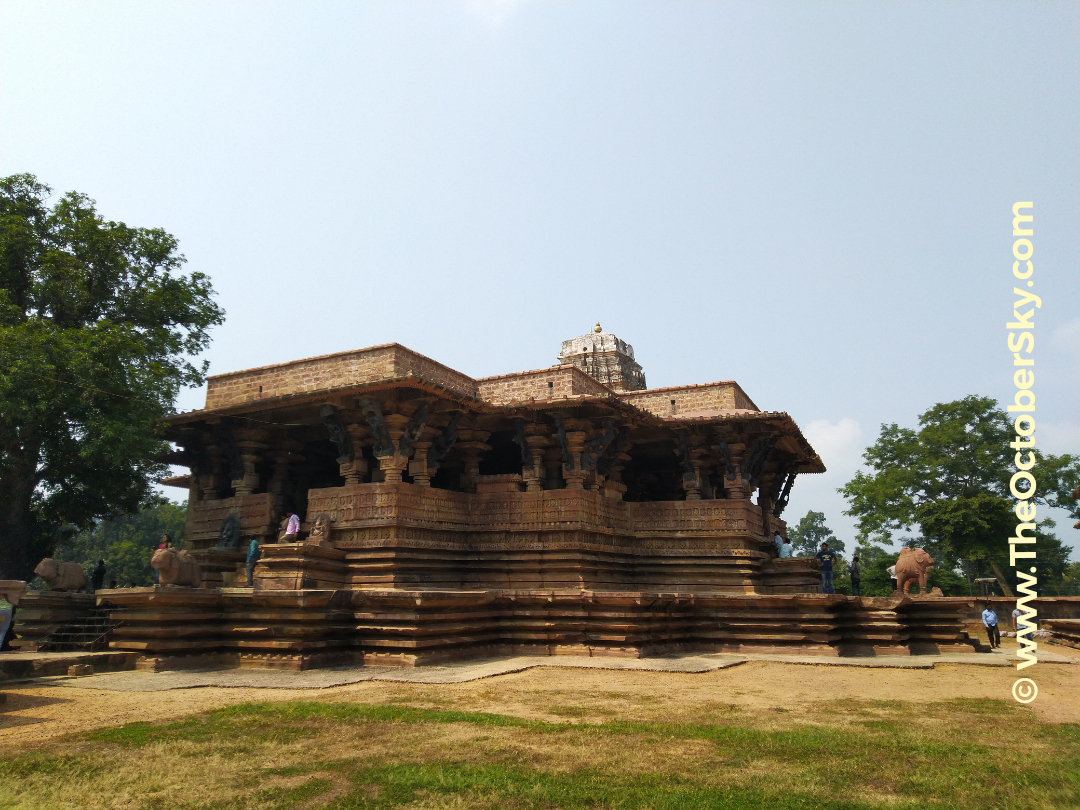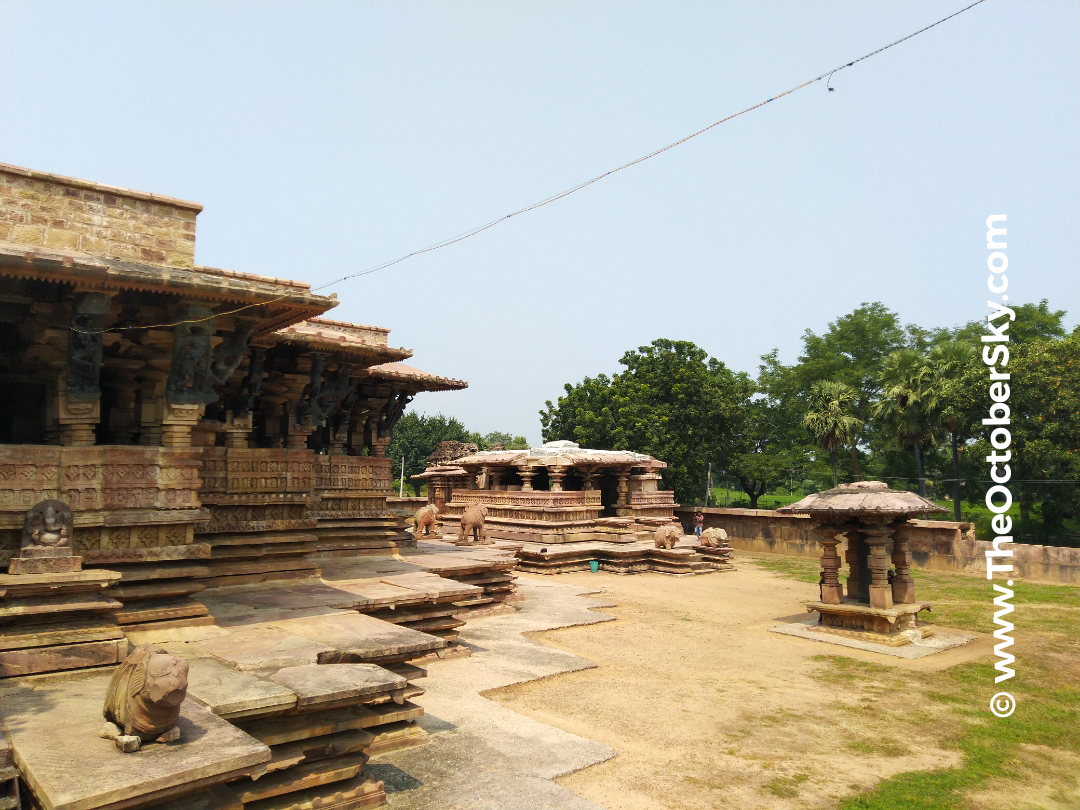India, the land of great ancient civilization, home for many religions and cultures. This post is all about the idol of Lord Ganesha found at the temple of Ramappa.
Ramappa Temple also known as the Ramalingeswara temple, is located 77 km from Warangal, the ancient capital of the Kakatiya dynasty, 157 km from Hyderabad in the state of Telangana in southern India. An inscription in the temple dates it to the year 1213 AD and says it was built by a General Recherla Rudra, during the period of the Kakatiya ruler Ganapati Deva.
The temple is a Shivalaya, where Lord Ramalingeswara is worshipped. It stands majestically on a 6 ft high star-shaped platform. The hall in front of the sanctum has numerous carved pillars that have been positioned to create an effect that combines light and space wonderfully. The temple is named after the sculptor Ramappa, who built it, and is perhaps the only temple in India to be named after a craftsman who built it. History says that it took 40 years to build this temple.
The main structure is in a reddish sandstone, but the columns round the outside have large brackets of black basalt. These are carved as mythical animals or female dancers or musicians, and are “the masterpieces of Kakatiya art, notable for their delicate carving, sensuous postures and elongated bodies and heads” (We are going to share most detailed description in our upcoming posts)
Coming to the idol of Lord Ganesha, the elephant headed god in Hinduism, Bhudhhism, and Jainism. Ganesha is widely revered as the remover of obstacles, the patron of arts and sciences and the deva of intellect and wisdom. As the god of beginnings, he is honoured at the start of rites and ceremonies. Ganesha is also invoked as patron of letters and learning during writing sessions.

The Symbolic Representation of Ganesha
An elephant’s trunk has the strength to uproot a tree as well as the finesse to pick up a needle.
Ganesha’s trunk symbolises the fact that the wise person has both immense strength and fine discrimination. Ganesha has large ears. The wise person hears all. He has four hands. In one hand he holds a lotus, the symbol of enlightenment. In the other hand he holds a hatchet. That is, the old karma, all your sanskars, the accumulated good and bad of past deeds get cut when enlightenment comes.
The third hand holds laddus, the round sweet-meats. They are the rewards of a wise life. Ganesha is never shown eating the laddus. The wise man never partakes of the rewards of his deeds. He is not attached to them.

Ganesha has only one tusk; the other is shown broken. There is an interesting story as to how Ganesh happened to get an elephant’s head and how one tusk got broken. The symbolism of the broken tusk is that the wise person is beyond duality.The fourth hand is shown by holding the broken tusk, which says retain what is good and throw away what is bad. The wise man wishes the best for everyone.

We tend to think that we end when our bodies end in the material world. We are the first person. All else is different. This duality is created by the mind which creates the ego to help us survive in this world. This ‘me-other’ duality is the screen keeping us from realising our real Self, which is beyond body and mind. Once we transcend this duality, we see the entire Universe as a single whole and we become aware of our true Selves. The single tusk of Ganesha symbolises this non-duality. Wisdom allows us to see all as one and ourselves an integral part of the whole.
Ganesha is shown sitting with one foot on the ground and the other resting on his knee, above the ground. The wise person is of this earth, yet not entirely of this earth.
Ganesha is shown seated on a rat. The reason for saying that Ganesha ‘rides’ on the rat is that the rat is among the greediest of all animals. It will keep nibbling at whatever is available, eating everything it can. Scientifically, too, the rat’s teeth keep growing and it has to keep chewing on something to keep these within limits. The rat is a symbol of our senses, which are never satisfied. They crave new experiences, new tastes. Left uncontrolled, they keep growing forever. The wise person rides on his senses. He keeps them under control.
After the fall of Kakatiya rulers, the sacrifice of Pratapa Rudra, December 31, 1323, this temple was thrown into the dark night, where it spent the next 600 years alone in the deep forest. During this period, some of the idols were robbed and Some are left broken.